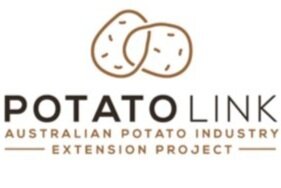Erratum Notice PotatoLink Magazine Issue 08
These corrections relate to the article Special feature: seed potatoes in Issue 08 of the PotatoLink Magazine.
Seed certification break out box
The original article stated that “Since 2013, the Australian National Standard has been managed by the Australian Seed Potato Industry Certification Authority (AuSPICA).”
Correction: The Australian Seed Potato Certification Authority (AuSPICA) does not manage the National Seed Potato Certification standards. AuSPICA is a not for profit, industry-based organisation that provides seed potato certification and other services in South Australia, Victoria, and Northern New South Wales. PotatoLink apologises for this publication error.
In the print copy of PotatoLink Issue 8, the link How to read a certified label, directs to the AuSPICA website (auspica.org.au).
Table 2: Summary of important potato tuber disease and defects
Update: Extra clarifications have been added to the footnotes regarding ring rot, powdery scab and silver scurf.
Potato ring rot (Clavibacter michiganensis subsp. sepedonicus) is listed as a quarantine disease in Australia. Tissue culture potato material entering Australia is tested for the bacterium that causes Ring rot. Detection of ring rot in a potato production region would activate quarantine protocols and restrictions on product movement. In addition, Australian seed certification schemes lists ring rot as a zero-tolerance disease meaning any detection of ring rot during routine inspections would make any seed lot ineligible for certification.Powdery scab was noted as a disease which could potentially spread and/or develop postharvest. Powdery scab inoculum can be spread within storage facilities on infected soil or dust. However, powdery scab is primarily a soilborne disease and does not develop during storage.
Curing and handling potato seed – step by step
Original text cites Johnson S.B (2021) “Cool the cut seed below 7oC (preferably 3-4oC)”
Correction: Curing of potatoes occurs best at 15oC with high humidity and good ventilation. Cooling cut seed potatoes immediately after cutting will slow or limit the curing process, potentially increasing the risk of storage issues such as disease.
Table 3: Possible seed chemical treatments currently registered for use in Australia
Update: Table 3 has been removed. Although stated that it was not a complete list of possible treatments, it may have caused confusion due to various application methods, some of which were not seed treatments.
